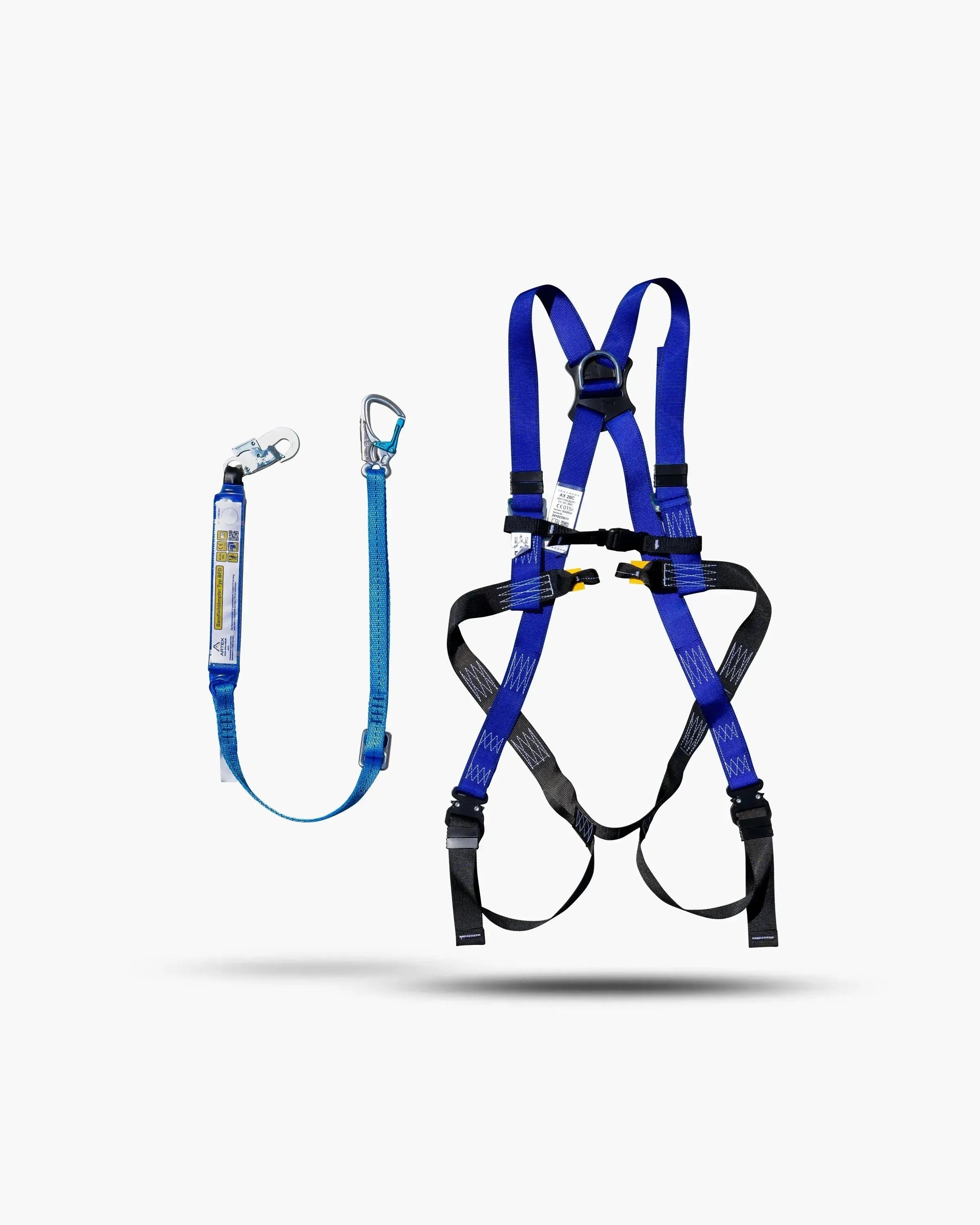Aerial work platforms allow you to work safely at heights, but they do involve risks. Robust safety equipment is therefore essential. In this article, we will introduce the most important safety features of aerial work platforms - from sturdy guardrails to emergency stop switches. These features are essential to ensure operator safety and to meet legal requirements. A better understanding of these features will help you choose the right aerial work platform and promote a safe working environment.
Work Platform Safety Basics
Safety when using aerial work platforms is crucial to avoid accidents and ensure smooth operations. The built-in safety devices play a crucial role in this. They serve to protect both the operating personnel and the surrounding work environment. From the sturdy guardrail that prevents falls to the emergency stop button that enables immediate shutdown in the event of an emergency, these devices play a key role in preventing hazards. Knowledge and correct use of the safety devices is therefore essential for anyone who works with aerial work platforms and forms the basis for the safe and efficient use of these useful height access solutions.
Primary safety devices: railings and fall arrest systems
Railings and fall arrest systems are among the most important safety features on a work platform. They form the first line of defense against the serious risk of a fall.
work platform railings
Guardrails are essential for creating a safe working environment in high-altitude workplaces. They surround the work platform and provide physical protection to prevent people or objects from falling from the platform. They must be strong enough to withstand the pressure of a potential fall.
fall arrest systems
Fall arrest systems provide additional protection by minimizing the risk of injury in the event of a fall. These systems can consist of harnesses, ropes and connectors that ensure that the operating personnel are safely restrained in the event of a fall. Fall arrest systems must be checked and maintained regularly to ensure they are functioning properly. A common example is the so-called PPEgA.
Emergency stop switch: quick reaction in case of emergency
The emergency stop switch is a basic safety device on aerial work platforms that enables a quick response in the event of an emergency. Operating the switch immediately cuts off the power supply to the aerial work platform, stopping the movement of the aerial work platform in a dangerous situation and minimising further risks.
The main benefit of the emergency stop button is its ability to shut down the aerial work platform immediately, thus preventing potentially dangerous situations. Whether it is a malfunction of the machine or another source of danger, the emergency stop button enables an immediate response.
Ground controls: control from below
Ground controls are an important safety feature for aerial work platforms that allow the platform to be controlled from the ground. In the event of an emergency or malfunction, these controls allow external control of the aerial work platform to safely manage the situation.
The ground control offers an additional control option that can be particularly important in emergency situations. If a problem occurs on the stage, the operating personnel on the ground can intervene and control the stage safely.
Secondary safety devices: Mainly found on modern work platforms
Sensors: Guard against overload and tilt
Sensors are essential safety devices on aerial work platforms that ensure that load limits are not exceeded. They monitor the load and inclination of the platform and provide automatic shutdown or warning if unsafe conditions are detected.
tilt sensor
Tilt sensors detect the tilt of the aerial work platform and are particularly important on uneven terrain. They warn the operator or automatically stop the work platform if a dangerous tilt is detected, thus preventing a possible tipping over.
load moment limiter
Load moment limiters monitor the load on the work platform and ensure that the permissible load limits are not exceeded. They help to avoid overloads and the associated hazards.
basket scale
The basket scale measures the weight of the load in the work basket and ensures that the permissible load is not exceeded. Overloading the work basket can pose a serious safety risk.
Overload sensors are an important safety measure for monitoring the stability of work platforms. They are designed to minimize the risk of accidents caused by overloading or improper tilting. However, not all work platforms are equipped with such sensors. Depending on the model and manufacturer, different sensors may be installed to provide protection against the specific hazards caused by overloading and incorrect tilting.
Pothole protection: Safe on the road despite uneven surfaces
Pothole protection is an essential safety feature that helps maintain the stability of the aerial work platform when driving over bumps or potholes. The system detects when the wheels of an aerial work platform enter a pothole and automatically blocks movement or reduces the speed of the aerial work platform to prevent tipping or other accidents. Pothole protection stabilizes the aerial work platform and significantly reduces the risk of accidents on uneven terrain. This is an invaluable safety feature that protects both the operator and the area around the aerial work platform.
Base plates: Safe standing on all levels
Shims are an important part of work platform safety equipment as they provide a stable and non-slip surface. They are particularly useful on uneven, soft or slippery surfaces and contribute to the stability of the work platform.
Base plates have a non-slip surface that increases the adhesion between the floor and the work platform. This minimizes the risk of slipping accidents and ensures that the work platform stands securely.
On uneven or soft ground, base plates provide the aerial work platform with a secure footing. They distribute the load evenly and prevent the work platform from sinking or tipping over.
Shims are available in a variety of sizes and materials so they can be adapted to the specific conditions of the construction site. Correct selection and placement of shims is critical to safety.
Conclusion: Multi-level protection through safety devices on modern work platforms
Safety features on MEWPs are critical to minimising the hazards associated with working at height. From primary protection measures such as guardrails and fall protection to engineered safety features such as overload sensors and emergency stop switches, each feature provides specific protection against certain hazards. Shims and impact protection provide additional stability on uneven terrain, while ground controls provide the ability to intervene from below in an emergency. Knowledge and proper application of these safety measures is essential to ensure operator safety and enable efficient operation of the MEWP.
















Share:
Instruction vs. instruction: These are the differences
Control elements on work platforms: How the control works